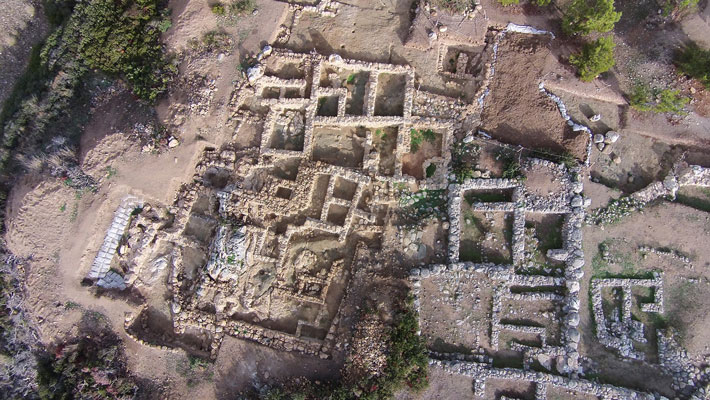 The Minoan civilization was an Aegean Bronze Age civilization that arose on the island of Krete and flourished from approximately 2000 to 1450 BC. Although not Hellenic per se, the Minoans had a great influence on Hellenic society, as well as it's mythology.
The Minoan civilization was an Aegean Bronze Age civilization that arose on the island of Krete and flourished from approximately 2000 to 1450 BC. Although not Hellenic per se, the Minoans had a great influence on Hellenic society, as well as it's mythology.As the article says: Krete has long been known as the subject of myth and legend. Fearing the wrath of her husband Kronos, who had devoured his other children, the Goddess Rhea secretly gave birth to Her son Zeus in the Dikteon Cave in the mountains of central Krete. It was back to Krete, too, that Zeus, in the form of a white bull, took the Phoenician woman Europa, where she became queen of the island and mother to King Minos. And for the Athenians of the Golden Age, their great hero and king, Theseus, also had a Kretan past, for it was on the island that he slew the Minotaur and escaped the prison of King Minos’ labyrinth.
Archaeology.org has a very interesting piece up on the discovery and subsequent research done on Minoan society and one of its major towns: 'Gournia'. The article focusses on how Harriet Boyd and her colleague Blanche Wheeler were brought to Gournia by a local farmer who was aware of a multitude of 'old things' to be found at the site.
Over several hours on May 19, 1901, Boyd collected a few potsherds and located the tops of several ancient walls, enough to convince her it was worth sending a team of workmen to the site the next morning. When she arrived at Gournia on the afternoon of the 20th, Boyd was astonished to see the men holding a bronze spear and sickle and numerous fragments of stone and pottery vessels, and clearing the threshold of a house and a well-paved road complete with a clay gutter. The following day Boyd returned with 51 workmen, and within three days, additional houses and roads had been uncovered, as well as more vases and bronze tools, making her certain that she had found what she was seeking—a Bronze Age settlement of what she called 'the best period of Cretan civilization'.
During three seasons ending in 1904, Boyd and her team, which averaged more than a hundred workmen along with a number of local girls whose job was to wash the finds, excavated the remains of an ancient town that had lain buried and unknown for nearly 3,500 years. Of all the sites in the prehistoric Aegean, Gournia gives the best idea of what a Minoan town looked like, which Harriet Boyd understood after just three years of working there. She wrote in her site publication:
“The chief archaeological value of Gournia is that it has given us a remarkably clear picture of the everyday circumstances, occupations, and ideals of the Aegean folk at the height of their true prosperity.”
The entire article is a very interesting read about the history of excavations and discoveries on the island. If you are interested in the Minoan culture, please head over to Archaeology.org for a very interesting read.
Image: The well-preserved remains of the ancient Minoan town of Gournia in eastern Krete still stand after more than 3,500 years. Copyright: Chronis Papanikolopoulos.


 Khaire! Would you buy me a coffee?
Khaire! Would you buy me a coffee?
No comments:
Post a Comment